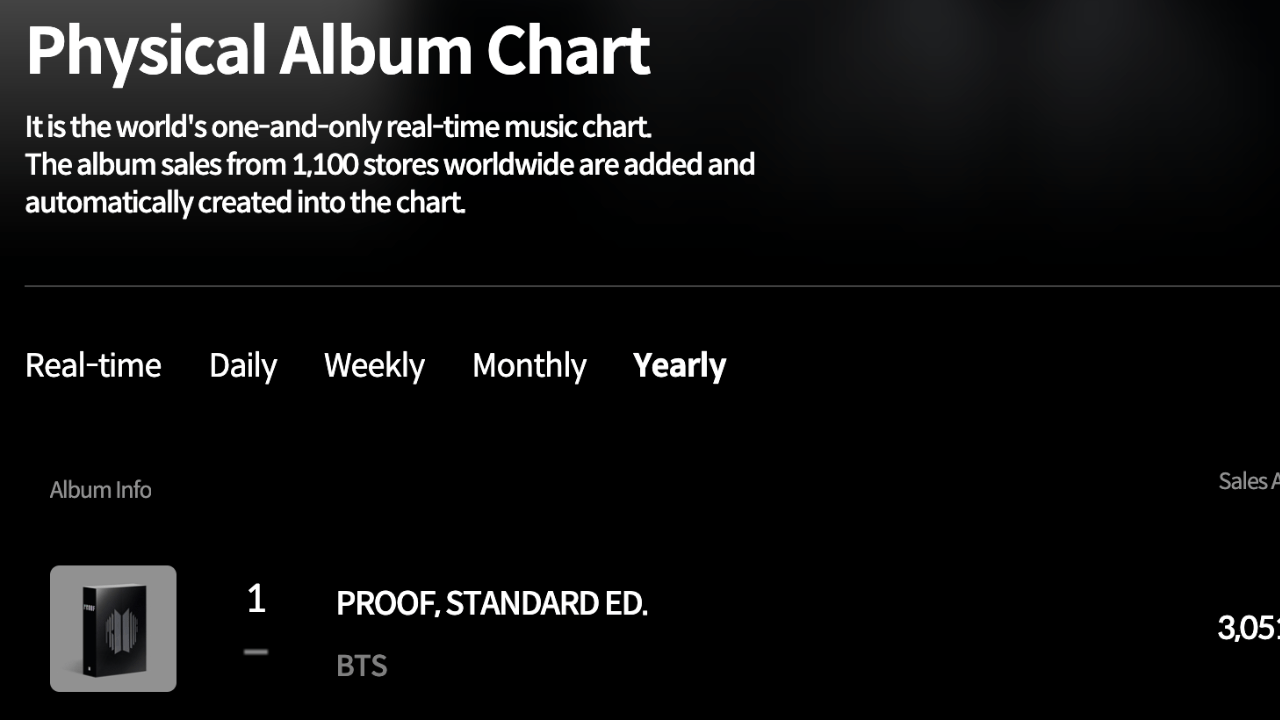In the age of digital streaming, the physical album chart holds a unique and enduring significance. It celebrates the tangible side of music, where CDs, vinyl records, and other physical formats connect fans to their favorite artists in a lasting way. Despite the rise of streaming, physical album sales charts remain an essential part of the music industry, showcasing the most popular albums and reflecting listener loyalty.
This blog delves into the world of physical album charts. From their origins to their relevance in today’s market, we’ll explore how these charts shape the industry and continue to influence fans worldwide.
What Is a Physical Album Chart?
A physical album chart ranks music albums based on their sales in physical formats such as CDs, vinyl records, and cassette tapes. Unlike streaming or digital download charts, these rankings are solely based on tangible purchases.
Physical album charts offer a clear picture of an artist’s ability to sell albums as collectable items. For collectors and hardcore fans, these charts often symbolize a deep connection with the music and the artist.
Why Physical Albums Still Matter
While streaming dominates, physical albums hold a special place for artists and fans alike. Here’s why:
- Collector’s Value
Physical albums, especially vinyl and special editions, are often seen as collector’s items. Limited releases or autographed editions increase their desirability. - Tangibility
Owning a physical album provides a tangible connection to the music. The artwork, liner notes, and packaging add depth to the listening experience. - Support for Artists
Physical album sales often generate higher revenue for artists compared to streams, making them an important income source. - Cultural Significance
Physical album charts serve as a snapshot of popular culture, showcasing what people are buying and valuing in music.
History of the Physical Album Chart
The concept of music charts began in the mid-20th century as a way to rank the popularity of songs and albums. Physical album charts grew in prominence during the vinyl and CD eras, reflecting the explosive growth of the music industry.
- 1950s and 1960s: The golden age of vinyl records saw albums like Sgt. Pepper’s Lonely Hearts Club Band dominate physical sales.
- 1980s and 1990s: The rise of CDs brought a new wave of physical album sales, with artists like Michael Jackson and Madonna topping the charts.
- 2000s: With the advent of digital downloads, physical sales declined, but dedicated collectors kept the charts alive.
Today, physical album charts blend tradition with modern trends, as vinyl records enjoy a resurgence.
How Physical Album Charts Are Compiled
Physical album charts rely on accurate data from retailers and distributors. Here’s how they are typically compiled:
- Sales Data Collection
Retailers and online stores report their physical album sales to chart organizations, such as Billboard or the Official Charts Company. - Verification
Sales figures are verified to ensure authenticity. Pre-orders and special editions are included in these counts. - Ranking
Albums are ranked weekly based on total sales, with the most purchased album taking the top spot.
These charts highlight which albums resonate most with fans in a tangible, monetary sense.
Popular Physical Album Charts Worldwide
Several organizations maintain physical album charts, reflecting regional music trends.
- Billboard Physical Album Chart (USA)
Tracks top-selling physical albums across genres in the United States. - UK Official Albums Chart (UK)
Includes a dedicated segment for physical album sales. - Oricon Chart (Japan)
One of the most significant physical charts, showcasing the popularity of J-pop and international artists. - Gaon Album Chart (South Korea)
Dominated by K-pop, this chart is vital for understanding the global impact of Korean music.
The Resurgence of Vinyl and Its Impact on Physical Album Charts
Vinyl records are making a strong comeback, influencing physical album charts significantly. In recent years, vinyl has outsold CDs in several markets, a trend driven by nostalgia and the unique sound quality of analog recordings.
Collectors and younger audiences alike are embracing vinyl, leading to reissues of classic albums and the creation of new special editions. This resurgence has breathed new life into physical album charts.
How Artists Leverage the Physical Album Chart
For artists, topping the physical album chart is a mark of success. Here’s how they maximize their impact:
- Exclusive Editions
Limited editions with unique artwork, autographs, or bonus tracks attract collectors and drive sales. - Bundled Merchandise
Combining albums with merchandise like T-shirts or posters boosts physical album sales. - In-Store Signings
Hosting album signings at record stores encourages fans to purchase physical copies. - Pre-Orders
Offering pre-orders with incentives ensures strong first-week sales, helping artists climb the charts.
Challenges Facing the Physical Album Chart
Despite its enduring appeal, the physical album chart faces challenges:
- Digital Dominance
Streaming platforms overshadow physical sales in overall market share. - Production Costs
Manufacturing physical albums is more expensive compared to digital releases. - Limited Shelf Space
Many retailers prioritize digital products, reducing space for physical albums.
Overcoming these challenges requires innovation and fan engagement.
Physical Album Charts and Fan Loyalty
Fans play a crucial role in maintaining the relevance of physical album charts. By purchasing albums, they directly support their favorite artists and contribute to chart rankings. This symbiotic relationship between artists and fans underscores the emotional power of music.
Conclusion:
The physical album chart represents more than just sales figures. It reflects cultural trends, fan loyalty, and the enduring value of tangible music. While digital and streaming dominate the industry, physical album charts remind us of the unique joy that comes from holding and owning music.
Whether you’re a fan or an artist, the physical album chart continues to inspire and connect people through the power of music. Embrace it, celebrate it, and keep the tradition alive.
Related Articles:
For further reading, explore these related articles:
- Album Drawing: Tips to Design Stunning Cover Art
- How to Make an Album in Instagram: Easy Guide to Share Posts
For additional resources on music marketing and distribution, visit Deliver My Tune.




